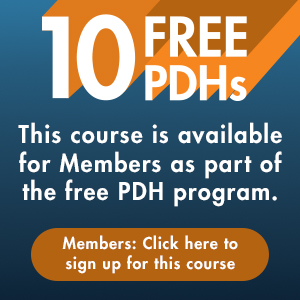

This product is available for group registration. Learn More
View Important Policies and System Requirements for this course.
This webinar was co-sponsored by ASCE's Transportation & Development Institute (T&DI) Committee on Sustainability & Environment, Development Council and ASCE Continuing Education
Instructor: Scott Douglas Gibson, P.E., M.ASCE
Course Length: 1.5 Hours
Purpose and Background
How can road owners save money while delivering a pavement preservation program and promoting active transportation? Pavement preservation techniques, particularly micro-surfacing and other surface treatments, are powerful tools for extending and improving the condition of an agencies' pavement network, providing millions of dollars in benefit. These treatments also result in a blank canvas to create roads more accommodating to all users. This can be done on roads where no thought was given to anything but cars when they were originally designed. Complete streets initiatives (aka: livability, walkability, active transportation) generally come out of planning and pavement preservation policies generally come out of public works. This webinar discusses the opportunities for developing more complete streets to accommodate the needs of cyclists, pedestrians, and other users through a robust pavement preservation program, enhancing support for policies in both planning and public works.
Primary Discussion Topics
- Opportunities to develop more complete streets
- Needs of cyclists, pedestrians, and others
- Enhancing support for policies in both planning and public works
Learning Outcomes
Upon completion of this course, you will be able to:
- Describe pavement preservation techniques and benefits
- Describe complete streets treatments and benefits
- Explain how pavement preservation can facilitate complete street and safety improvements and how complete policies can gain political
- support for pavement preservation
- Apply the triple bottom line of sustainability: social, economic, and environmental benefit to pavement preservation and complete streets policies.
Webinar Benefits
- Examine the basic concepts and benefits of a robust pavement preservation program
- Examine the basic concepts and benefits of complete streets policies for safety, health, and livability
- Examine the benefits of linking complete streets policies and pavement preservation policies to achieve the goals of pavement preservation and complete street initiatives
- Learn how one public agency implemented these concepts with great success
- Examine the benefits of corridor planning in street project and complete street project implementation
- Learn the details on different Preventive Maintenance surface treatments: slurry seals, micro-surfacing, and chips seals
- Learn about opportunities for broadening political and community support by making pavement preservation part of a bigger conversation about safety, health and livability
Assessment of Learning Outcomes
Students' achievement of the learning outcomes will be assessed via a short post-assessment (true-false, multiple choice and fill in the blank questions).
Intended Audience
- Civil Engineers working in urban environments
- Regional planners
- Metropolitan transportation organization officials
- Community development staff
- Neighborhood organizers
- Elected officials and/or their staff members
- Academics interested in the issues
Webinar Outline
- Overview and background
- Overview and benefits of robust pavement preservation
- Latest research
- Best practices
- Overview and benefits of complete streets and active transportation
- Demonstrate the mutually beneficial aspects of the planning/community development goals of complete streets and public works goals of implementing sound pavement preservation policies
- Complete Street opportunities with preventive maintenance
- Road diets and safety
- Lane narrowing and traffic calming
- Design considerations
- Funding benefits and considerations
- Network remaining life concept
- System equity and grant opportunities
- Case study
- Summary
- Questions and Answers
How to Earn your CEUs/PDHs and Receive Your Certificate of Completion
To receive your certificate of completion, you will need to complete a short on-line post-test and receive a passing score of 70% or higher within 1 year of purchasing the course.
How do I convert CEUs to PDHs?
1.0 CEU = 10 PDHs [Example: 0.1 CEU = 1 PDH]
